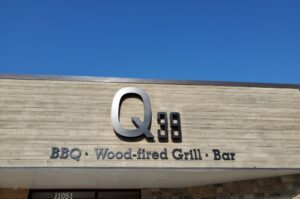Kansas City’s Shopping Malls at Economic Crossroads
Kansas City – Not just the Plaza, but also the shopping malls, especially the iconic Country Club Plaza, Oak Park Mall, and the Independence Center, are hitting a crucial economic crossroads. With a shared history that dates back to their glory days and vastly different prospects for the future, these retail icons are grappling with the challenge of catching up with the changing shopping patterns in the community.
A Peek into the Future
Recently, the new owners of the Country Club Plaza presented a sneak peek into their plans for reviving the once-thriving shopping district. The plan includes an office building, a boutique hotel, a small grocery store, higher-end entertainment options, and a selection of “best of the best” local restaurants and retailers to attract shoppers back. That’s not all; there will be a concerted effort to address longstanding issues like maintenance neglect.
Ray Washburne, president of HP Village Management, promised that much-needed infrastructure upgrades would be done even if it required over a $100 million investment. However, the Plaza’s woes are not isolated. In the past few decades, other once-bustling shopping centers such as Metcalf South, Bannister Mall, Indian Springs, Metro North, Blue Ridge, Antioch Center, and Mission Center have been torn down to make way for new developments.
The Tale of Two Survivors: Oak Park Mall and Independence Center
Today, only two regional malls remain intact in the Kansas City area — crosstown rivals Independence Centre and Oak Park Mall, but their fates appear to be taking different turns. The Oak Park Mall, designed with a bright, airy feel enhanced by skylights, white walls, and angled ceilings, has successfully adapted to the rise of online shopping and the emergence of trendy new lifestyle centers. It continues to draw consumers across the region, thanks to its rare and exclusive retailers and ongoing reinventions.
In contrast, Independence Center has been grappling with a series of departures, including well-known retailers like Sears and Forever 21. With about 20 empty spaces and a dwindling number of national brands, its struggle is evident.
Looking Beyond the Traditional Mall
With the surge in online sales, in-store shopping remains an embedded tradition for many shoppers. However, the focus of discretionary spending is changing. A recent report by the International Council of Shopping Centers (ICSC) demonstrated that 60% of Gen Z consumers prefer experiences over buying more things. This has led many malls to create more experience-driven outlets, which are seen as the new currency in the retail landscape.
To that end, the Country Club Plaza has already opened The Escape Game and intends to offer more high-end entertainment options. Similarly, Summit Fair shopping center plans to inaugurate an indoor mini golf and taphouse complex by early 2025. The ongoing transformation of these shopping centers underlines the need to provide more than just goods; providing experiences is a key factor in attracting the modern consumer.
Despite the challenges, these malls’ resilience, adaptability, and commitment to reinvention demonstrate their continuous effort to stay relevant in the ever-changing retail landscape. As they continue to evolve to meet the changing needs of the local community, these iconic Kansas City shopping malls may yet write a new chapter in retail history.







